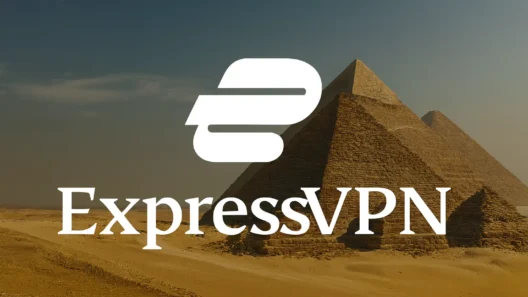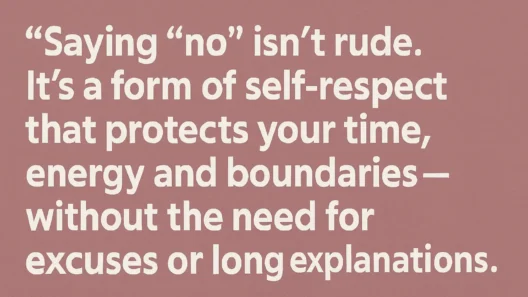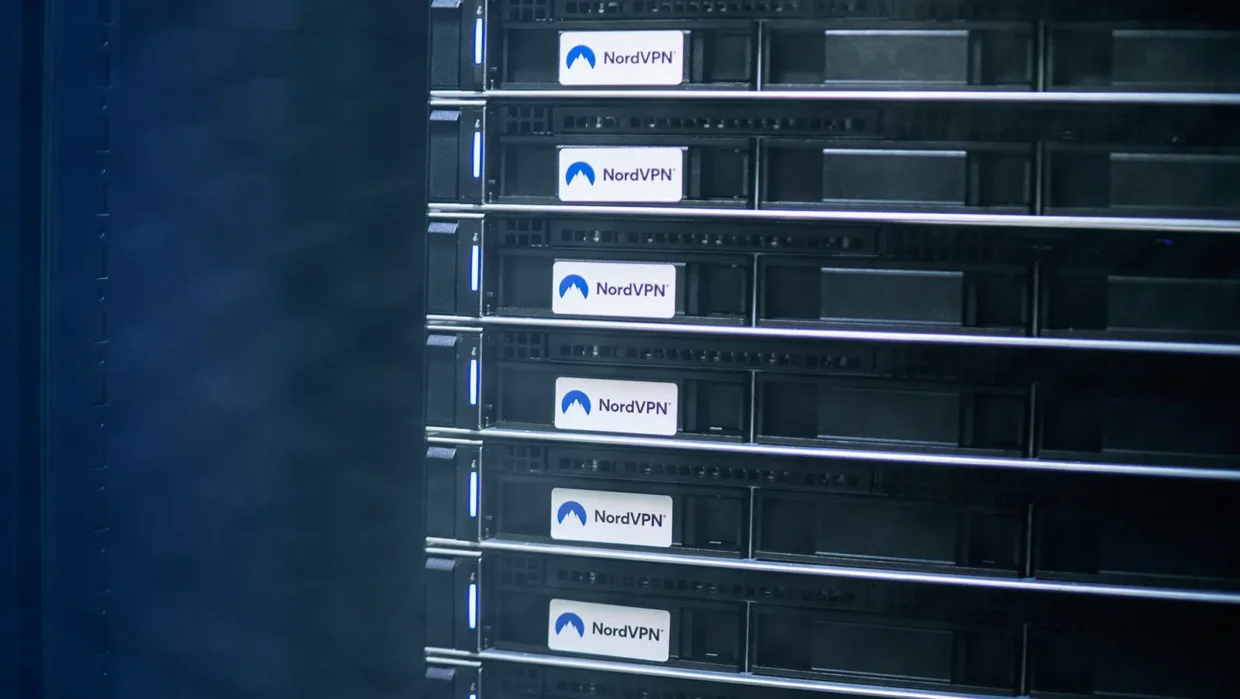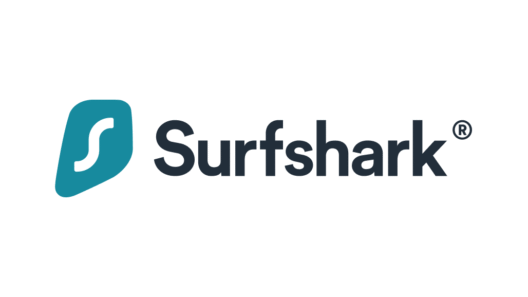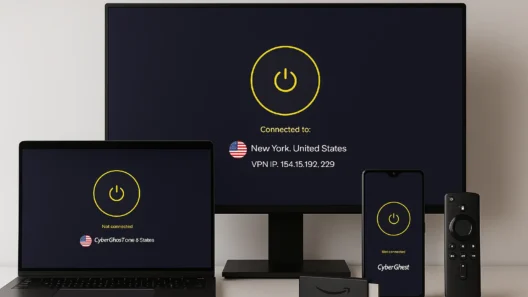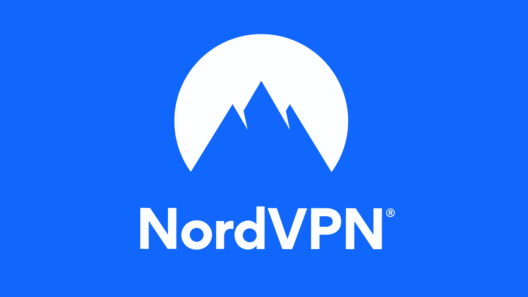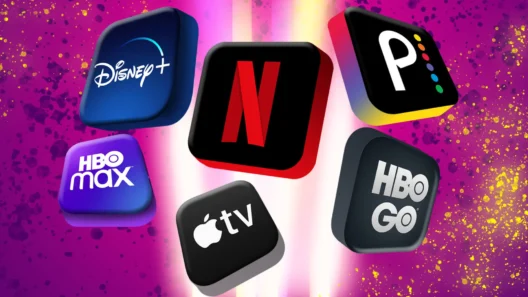As of 2025, NordVPN operates over 7,900+ servers in more than 126 countries worldwide. I got these numbers straight from their support team yesterday, so they’re fresh and accurate. The reason their website still lists slightly lower figures is pretty simple: updating stats across all language versions and product pages doesn’t happen daily. But rest assured—behind the scenes, their infrastructure is expanding all the time.
This kind of global reach puts NordVPN at the very top among VPN providers. No matter where you are—Tokyo, Berlin, Mexico City, or a beach in the Dominican Republic—you’ll always have access to a fast, nearby server. And that’s what makes all the difference when it comes to speed, reliability, and unblocking geo-restricted content.
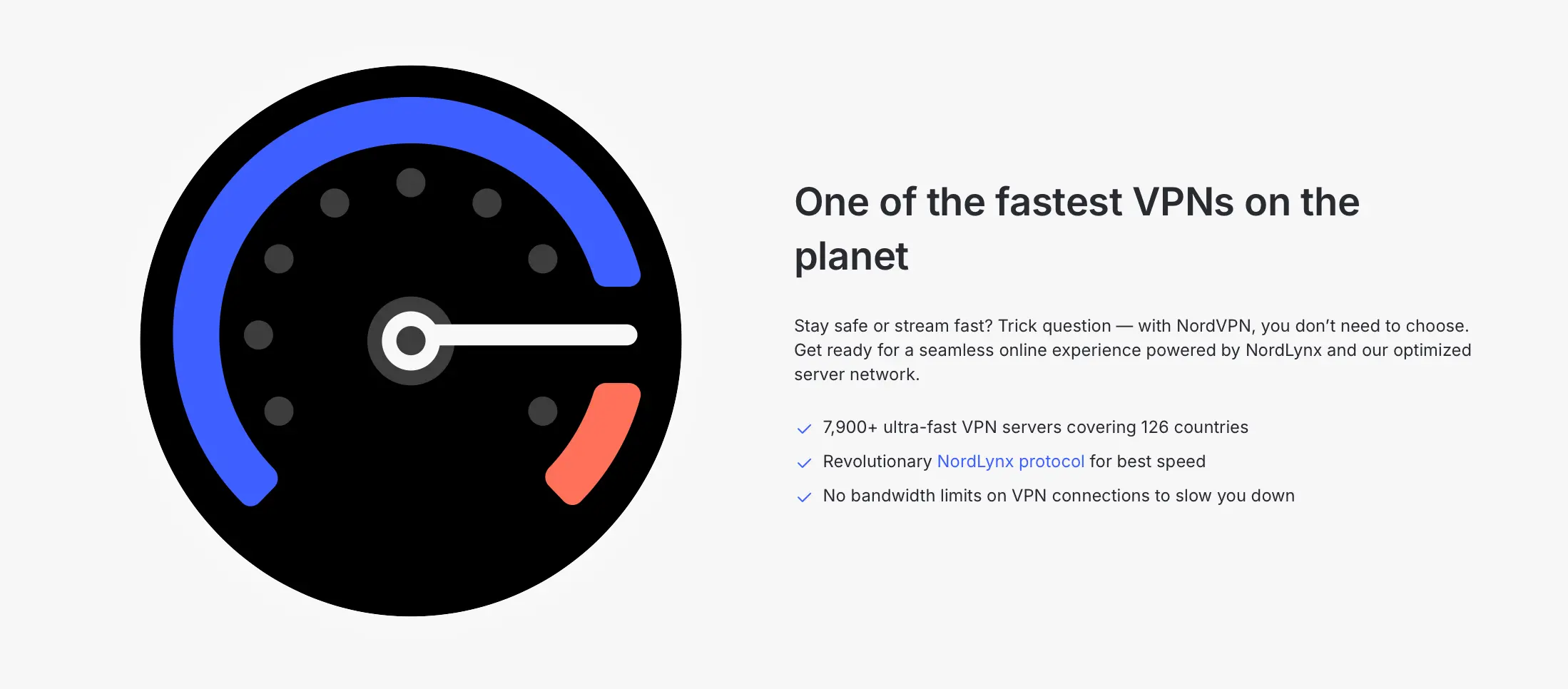
Where Are NordVPN Servers Located?
The location of a server determines more than just speed—it controls what content you can access, which regional laws apply, and how smooth your connection will be. Here’s how NordVPN’s server infrastructure breaks down by region:
Americas
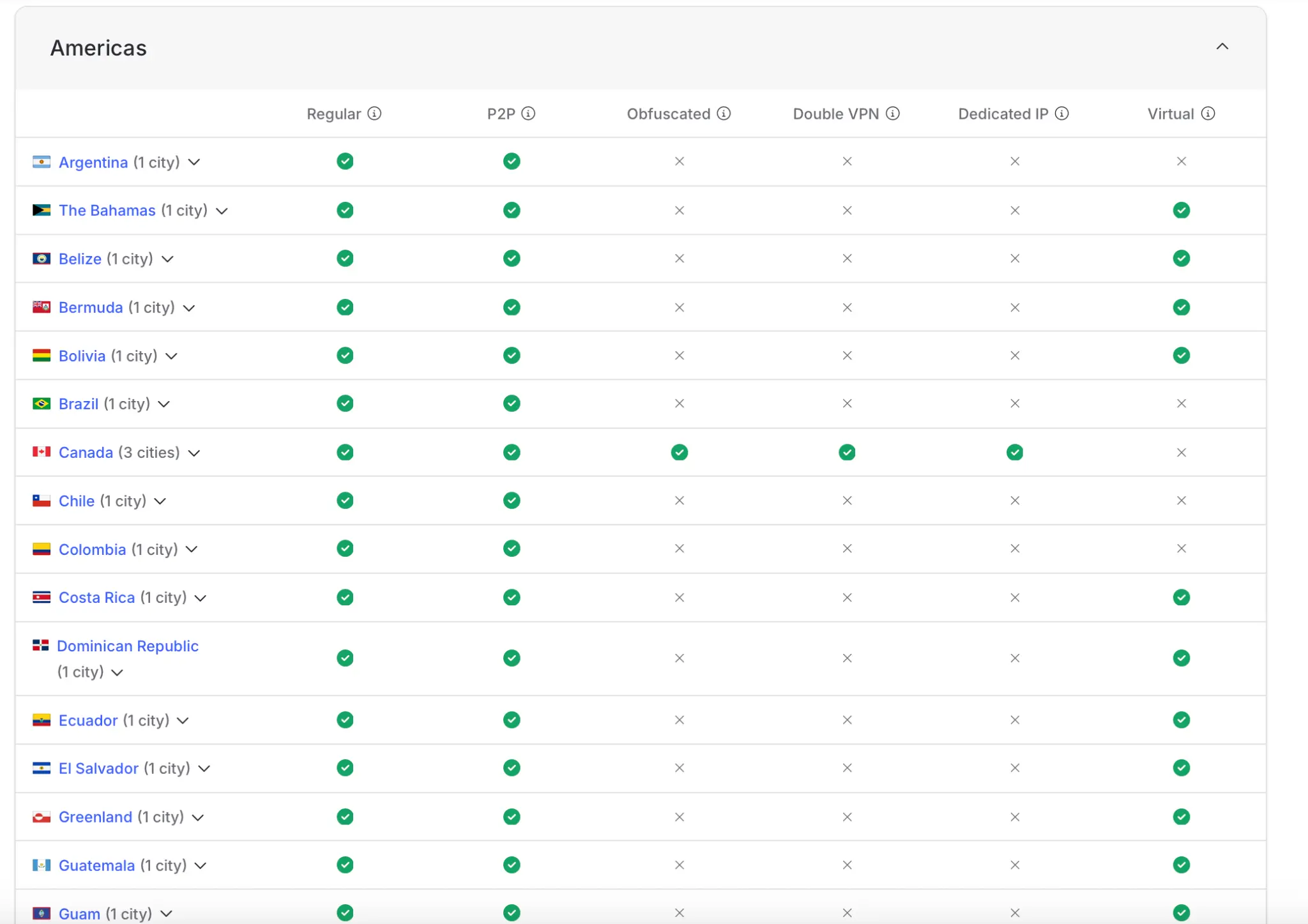
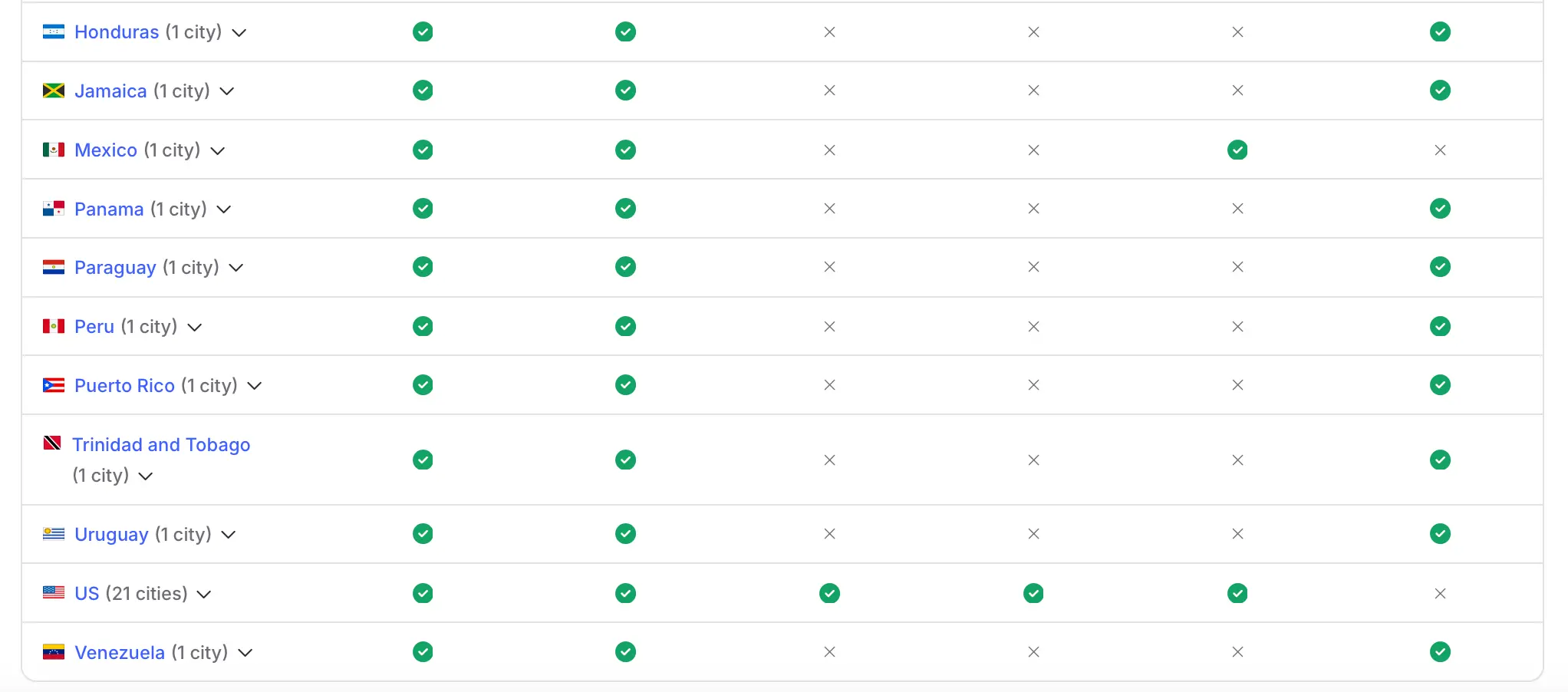
NordVPN has a strong presence across North, Central, and South America. Unsurprisingly, the United States has the largest number of cities covered, making it ideal for anyone needing access to U.S.-based content.
- United States – 21 cities (including Atlanta, Chicago, Dallas, Los Angeles, and more)
- Canada – 3 cities
- Brazil, Mexico, Colombia, Argentina, Chile, Peru – 1 city each
- Other locations – Bahamas, Belize, Guatemala, Ecuador, Puerto Rico, Trinidad & Tobago, and others
Thanks to this dense network, NordVPN is perfect for streaming U.S.-exclusive content like Netflix US, Hulu, or Max, even from abroad.
Europe servers NordVPN
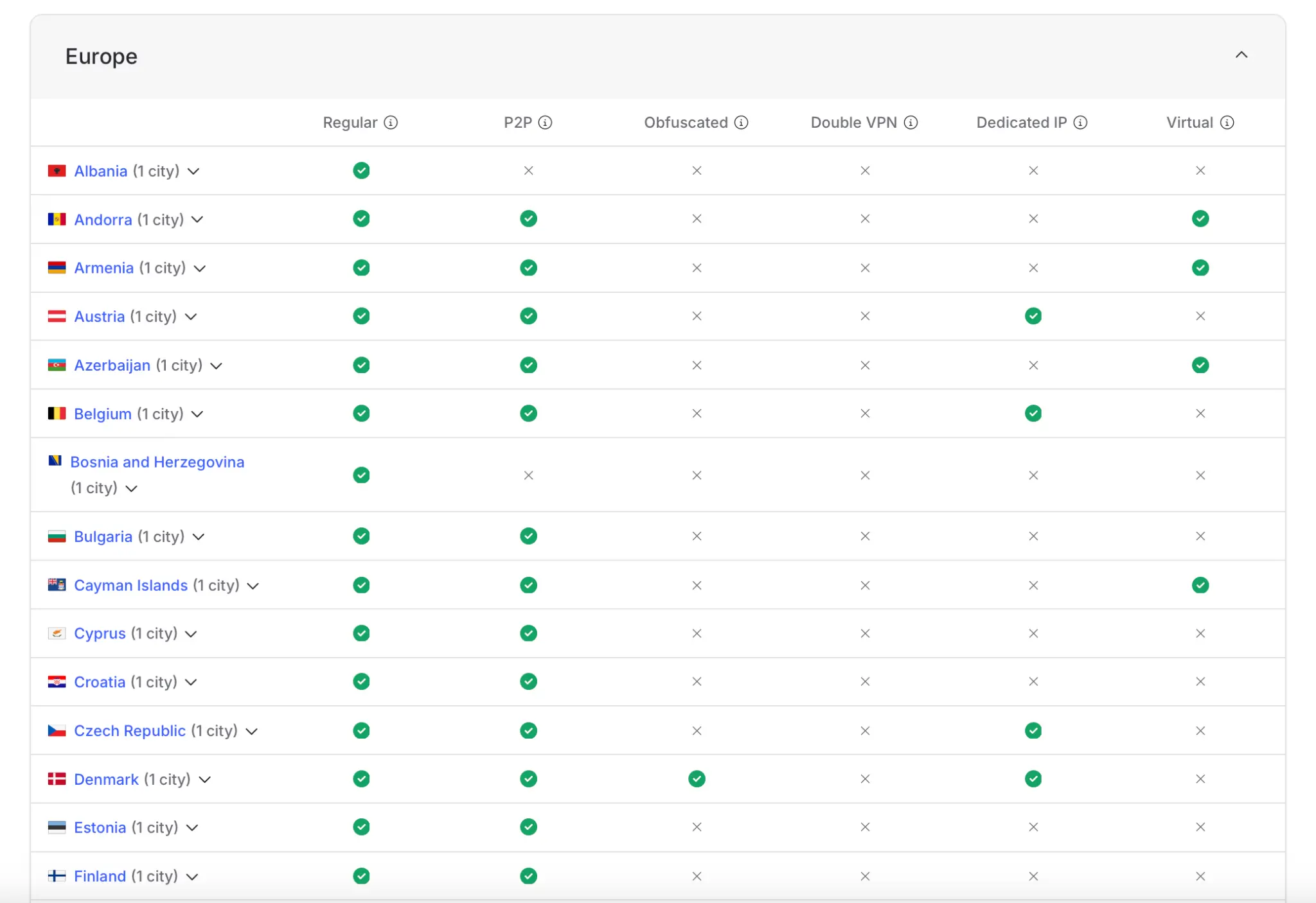
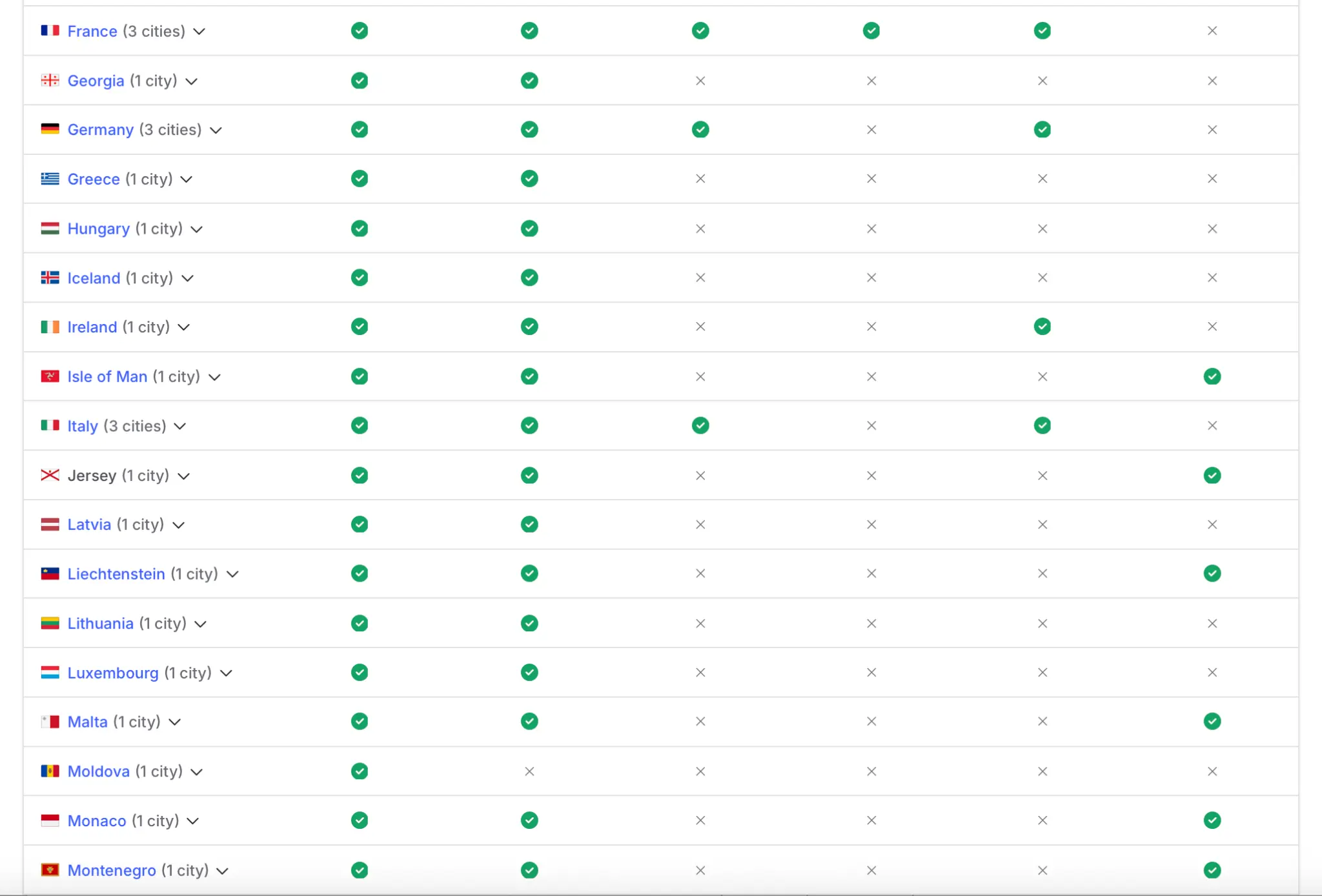
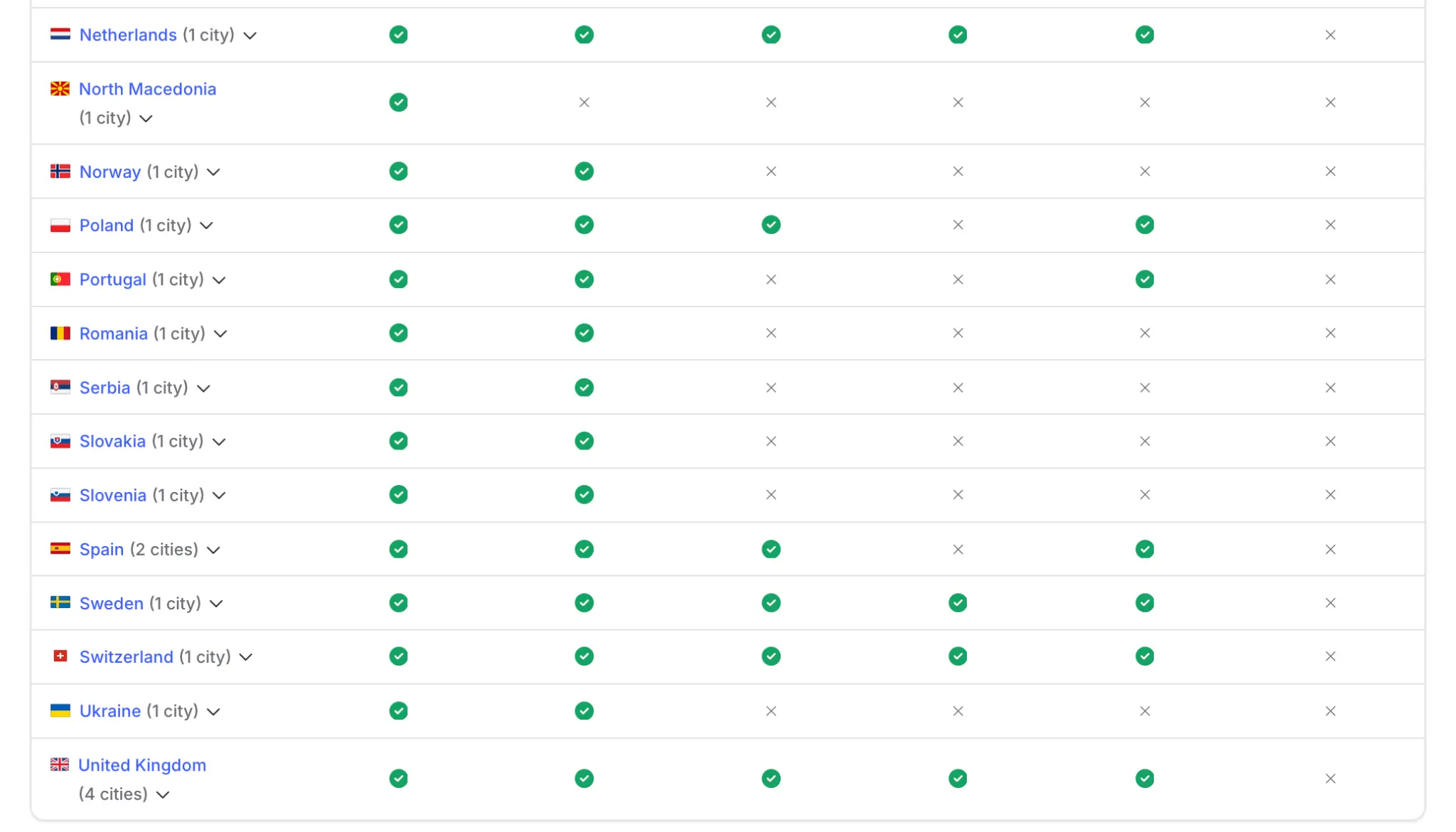
This is where NordVPN shines the brightest. Nearly every European country is covered—including not only the EU but also countries like Iceland, Serbia, and Ukraine.
- Germany – 3 cities
- United Kingdom – 4 cities
- France & Italy – 3 cities each
- Spain – 2 cities
- Scandinavia – Denmark, Norway, Sweden, Finland
- Eastern Europe – Poland, Hungary, Romania, Ukraine, Moldova, and more
What makes this important? Speed. European servers are extremely stable and high-performing. Personally, I’ve measured speeds over 900 Mbps on servers in this region when using the WireGuard protocol.
Asia-Pacific
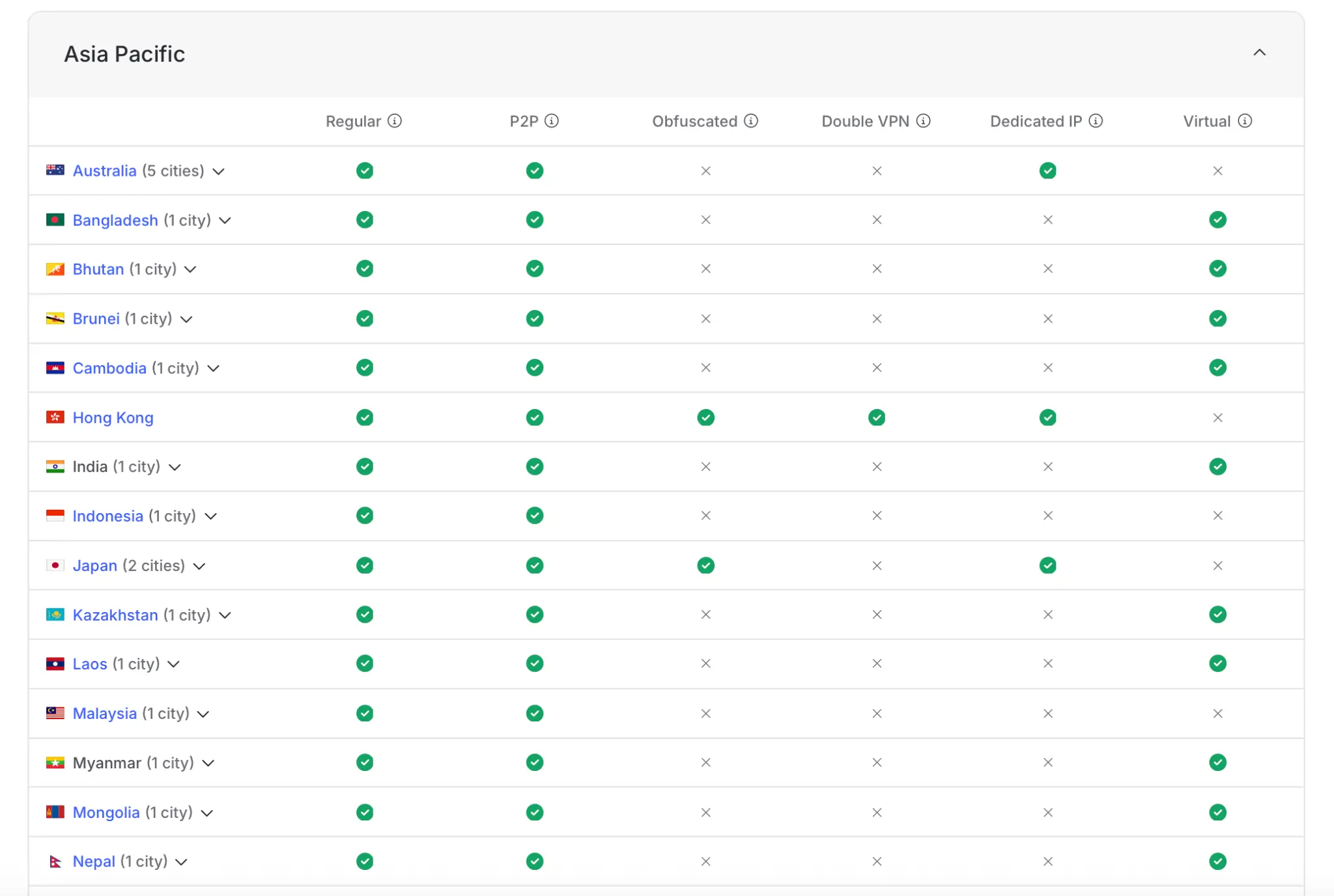
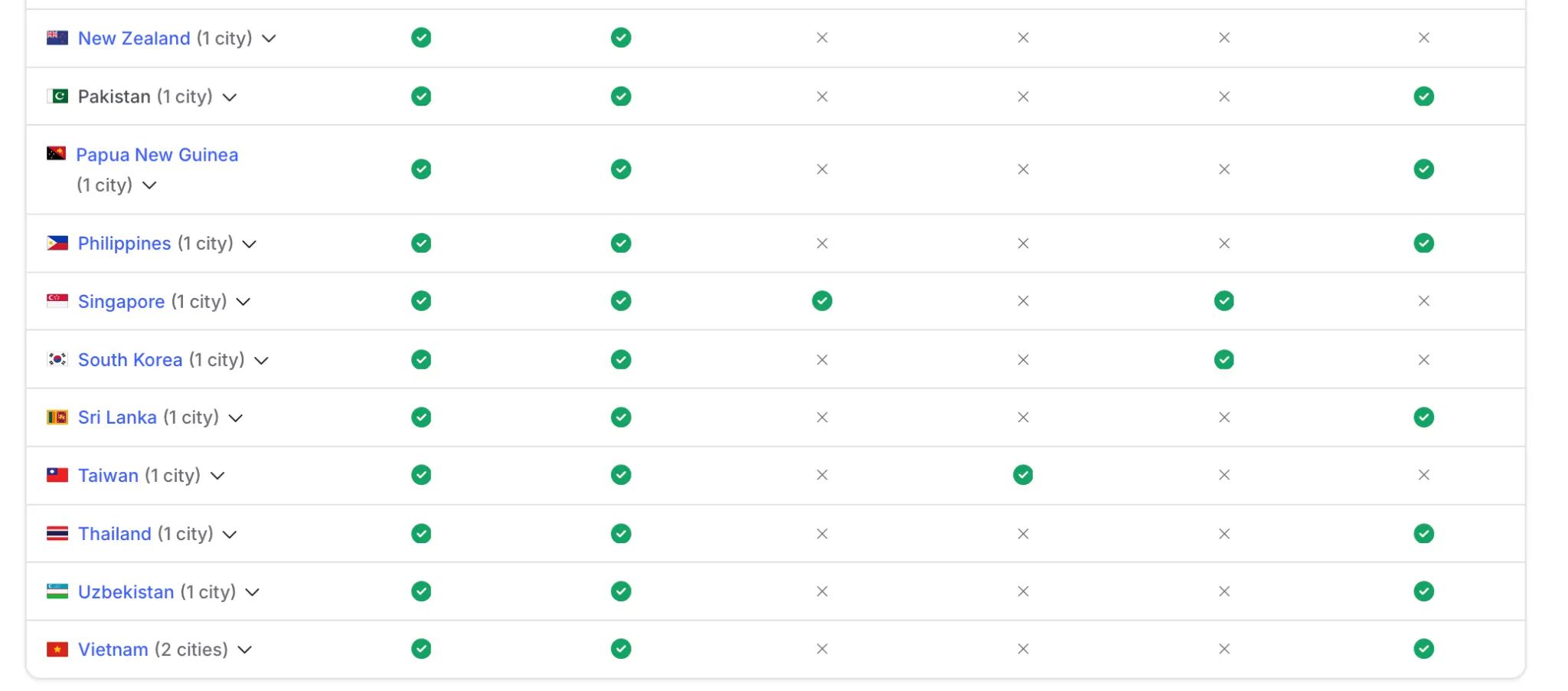
NordVPN doesn’t cut corners in Asia. You’ll find not just popular destinations but also lesser-covered countries like Bhutan or Brunei.
- Australia – 5 cities
- Japan – 2 cities
- India, Indonesia, Malaysia, Philippines, Thailand, Vietnam – at least 1 city each
- Hong Kong, Singapore, Taiwan – key locations for bypassing censorship
Virtual servers are also in play here. For example, due to regulatory restrictions in India, NordVPN offers Indian IP addresses via virtual servers physically hosted elsewhere.
Africa & Middle East
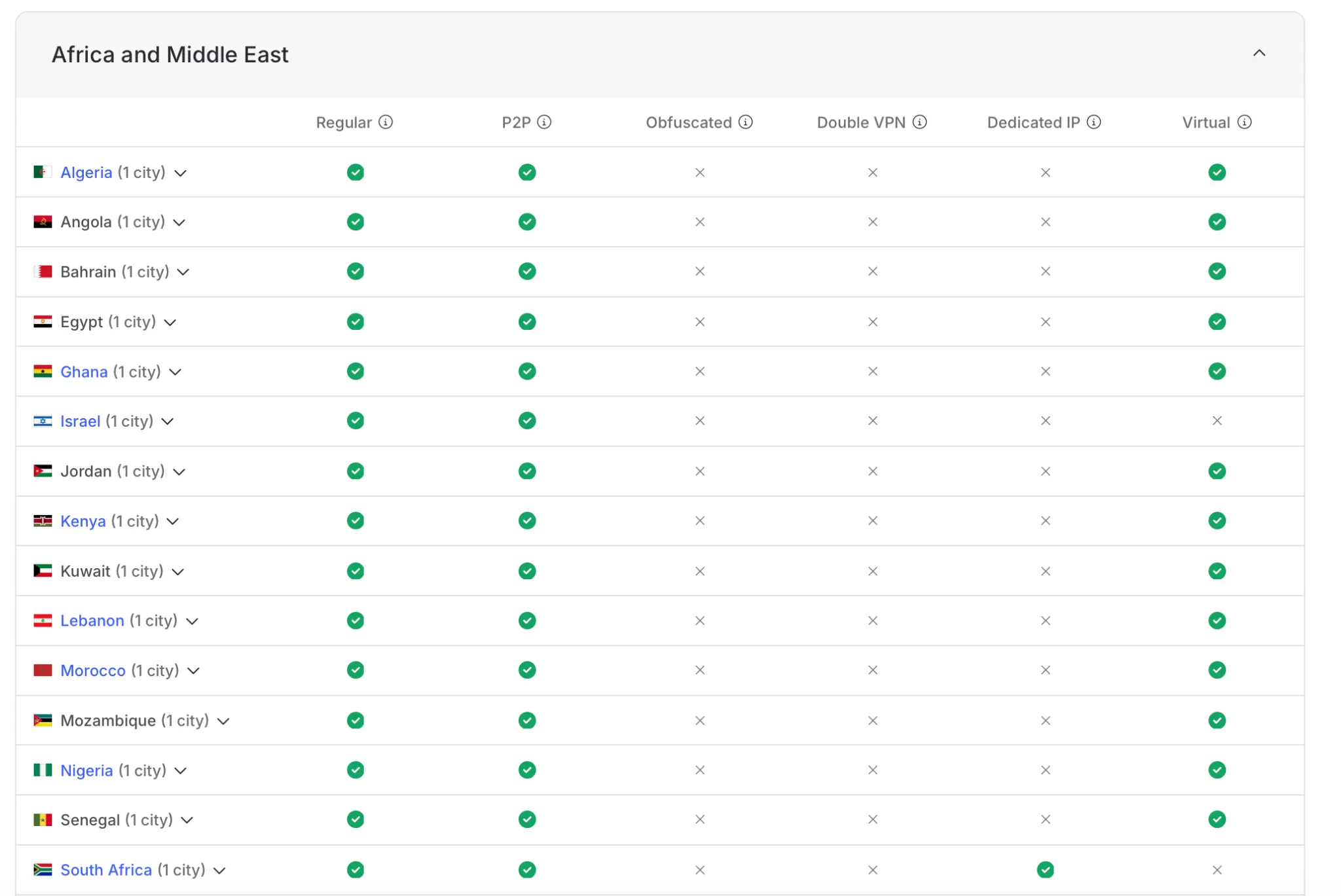

Africa is often underserved by VPNs—but NordVPN has gone the extra mile to include coverage in countries like Senegal, Mozambique, and Angola.
- Egypt, South Africa, Morocco, Nigeria, Algeria – 1 city each
- Middle East – UAE, Israel, Turkey, Jordan, Bahrain, Lebanon, and more
In some areas—especially the UAE and parts of the Middle East—obfuscated servers are highly recommended to bypass deep packet inspection and aggressive VPN blocking.
What Types of Servers Does NordVPN Offer?
NordVPN’s network isn’t just massive—it’s also tailored. Instead of offering just one standard connection, they divide their servers into specialized categories. Each is optimized for a different kind of use. Whether you’re downloading torrents, working with sensitive data, or trying to dodge VPN restrictions, there’s a server for that.
1. Standard Servers
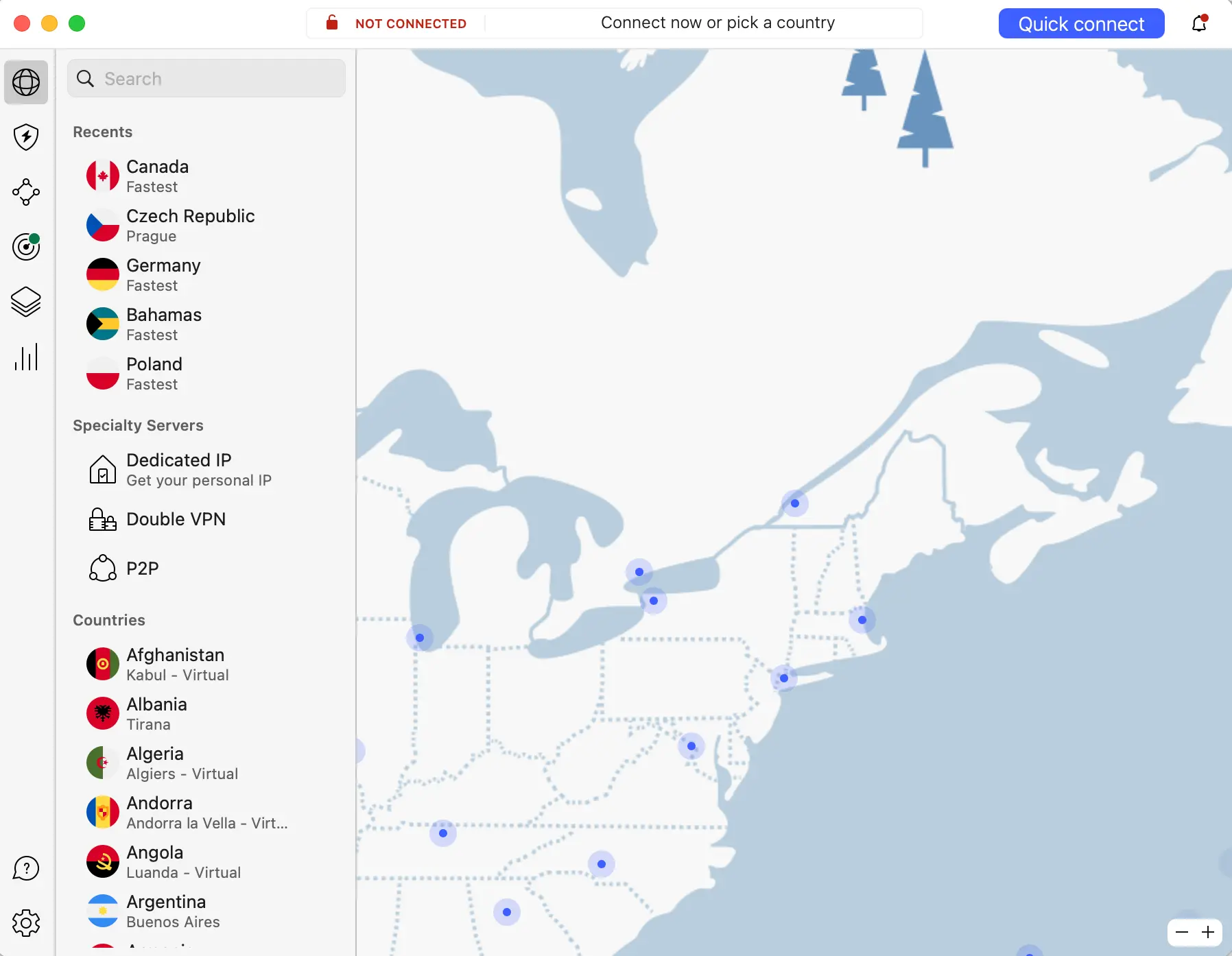
These are your go-to servers for everyday use. If you’re browsing the web, logging into email, watching YouTube, or shopping online, this is what you’ll be connected to by default.
Best for:
- General browsing
- Streaming services
- Secure access to websites and apps
This is what I use most of the time when I just need a quick and secure connection.
2. P2P Servers
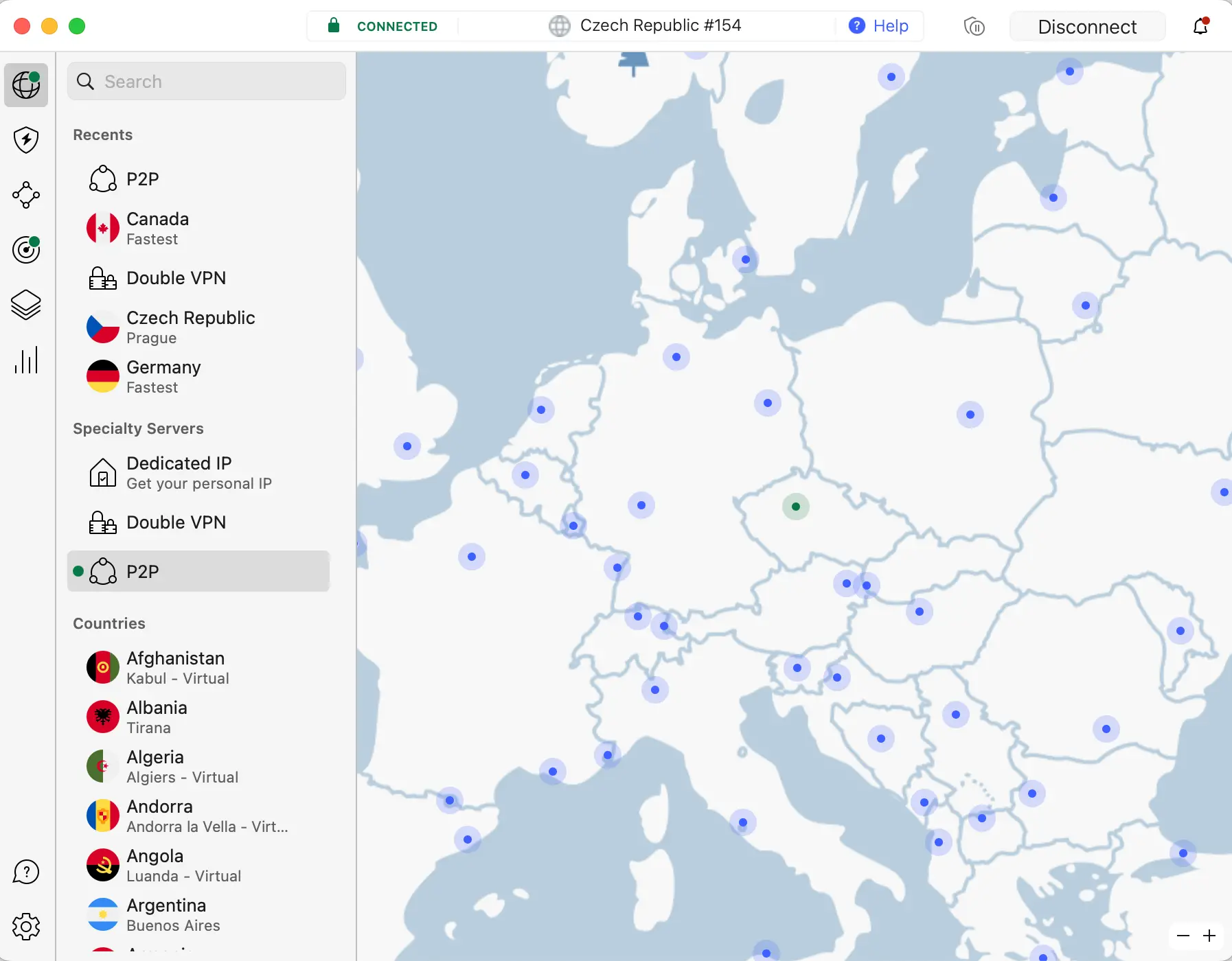
If you use BitTorrent or other peer-to-peer services, NordVPN offers optimized P2P servers in many locations. These are specifically configured for high-speed file sharing—and most importantly, they log nothing.
Available in: countries like the Netherlands, Germany, Canada, Switzerland, and the U.S.
Best for:
- Torrenting
- Large file transfers
- P2P platforms like qBittorrent or Transmission
Tip: Some torrent clients will disconnect automatically if you’re not connected to a true P2P server. Stick to these when using file-sharing apps.
3. Obfuscated Servers NordVPN
These are designed for getting around censorship and VPN blocking. Obfuscated servers make your VPN traffic look like regular internet traffic—useful in places that ban or throttle VPN connections.
Best for:
- Countries with internet restrictions (like China, UAE, or Iran)
- Restricted Wi-Fi networks (airports, schools, hotels)
- Avoiding VPN detection altogether
How to activate: You’ll need to use the OpenVPN protocol and enable obfuscated servers in the settings. It won’t work with WireGuard.
4. Onion Over VPN
If you’re familiar with the Tor network, you know it’s great for anonymity but incredibly slow. NordVPN solves that by letting you connect through a VPN first and then routing you into Tor.
Best for:
- Maximum anonymity
- Accessing the dark web safely
- Journalists, activists, or anyone dealing with sensitive sources
The speed is limited—but the privacy benefit is huge.
5. Double VPN
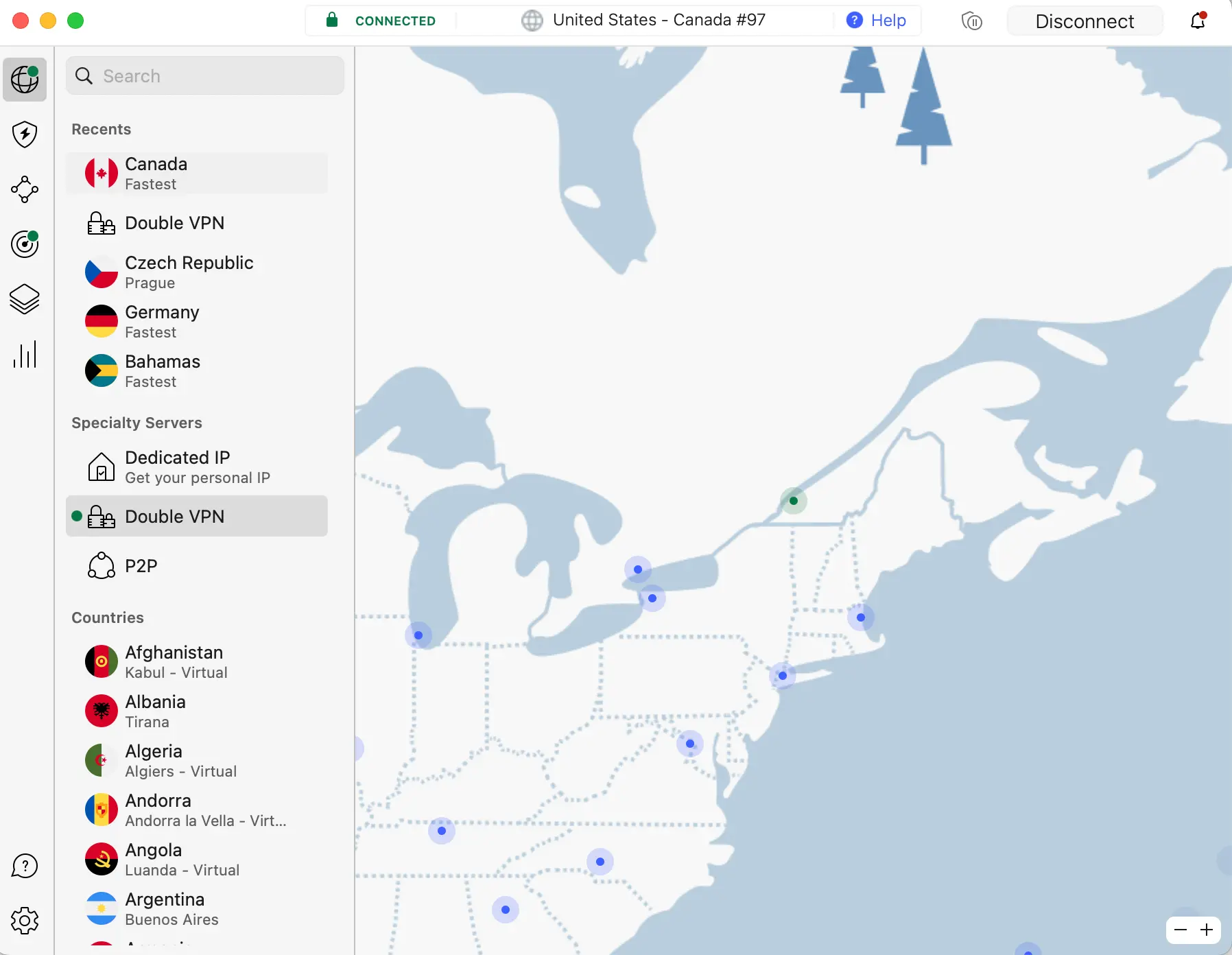
Double VPN routes your traffic through two separate servers in different countries, encrypting your data twice. It’s like having a VPN tunnel inside another tunnel.
Best for:
- High-risk users
- Journalists and political dissidents
- Privacy advocates
It’s slightly slower, yes, but for those who need it, it’s worth the trade-off.
6. Dedicated IP Servers NordVPN
This is a paid add-on, but it gives you an IP address that only you use. It’s static and doesn’t change. Perfect for those who need consistent IP-based access.
Best for:
- Logging into online banking without triggering fraud alerts
- Accessing work systems that whitelist specific IPs
- Reducing CAPTCHAs and account verifications
Available in: the U.S., UK, Netherlands, France, Germany, Japan, and more.
How to Choose the Right NordVPN Server
When you open the NordVPN app, the first thing you’ll see is a big map and a button labeled “Quick Connect.” This automatically connects you to the server with the best performance at that moment—based on speed, distance, and server load.
But sometimes, you want to be more specific.
Select by Country or City
Just click on a country name, and NordVPN will pick the best server in that region. Want even more control? Tap the three dots next to the country name, and you’ll be able to choose by city—or even a specific server number.
Examples:
- United States (21 cities): Choose New York for HBO Max, or Seattle for U.S. Netflix.
- United Kingdom: Great for streaming BBC iPlayer or ITV.
- Japan: Ideal if you’re into Japanese Netflix or local anime platforms.
Select by Specialty
Within the app, go to the “Specialty Servers” tab to choose exactly what you need:
- P2P
- Double VPN
- Obfuscated
- Onion Over VPN
- Dedicated IP
Pro tip: If you’re downloading torrents but don’t see P2P servers, check your protocol settings. You may need to switch to OpenVPN or WireGuard, depending on your platform.
What Affects VPN Speed?
Just like Wi-Fi, a few key factors determine how fast your VPN connection is. Here’s what you need to watch:
1. Distance from the Server
The closer you are to the VPN server, the better your ping and speed. If you’re in Western Europe, connecting to a German or Dutch server will usually give you better performance than a server in Australia or Singapore.
2. Server Load
Every server can only handle so many users. If a server is crowded, speed drops. The NordVPN app shows server load percentage—use it to pick a less crowded one.
3. Protocol Used
- WireGuard (NordLynx): Fastest protocol, ideal for streaming, browsing, and gaming.
- OpenVPN (UDP): Slightly slower but great for stability.
- OpenVPN (TCP): Even more stable, useful for restricted networks or poor connections.
I personally stick with NordLynx unless I’m in a hotel or airport where OpenVPN might work better.
4. Your Own Connection
Even the best VPN won’t fix a bad internet connection. That said, I’ve regularly hit over 950 Mbps using NordLynx on a fiber line, so the VPN itself isn’t the bottleneck.
How to Connect to a Specific Server NordVPN
NordVPN lets you go even deeper and pick an exact server by number. This is super useful if you’ve found a particular server that consistently works well for streaming or speed.
For example:
- US#8423 might consistently unblock Netflix for you
- DE#1220 could be your go-to for fast torrent downloads
Here’s how:
- Open the app and find your country
- Tap the three dots next to it
- View server list and pick the one with low load or your preferred number
Pro tip: I keep a few of my favorite servers saved under “Favorites” for quick access—one for U.S. streaming, one for Asia, and one for low-latency gaming.
Summary: What Do NordVPN Servers Actually Offer?
1. Global Coverage = Access from Anywhere
With over 7,900+ servers in 126 countries, NordVPN gives you access to the internet from virtually anywhere. This means:
- You can watch your home streaming services while abroad
- Access geo-restricted content like Netflix US or BBC iPlayer
- Book cheaper flights by appearing in another country
- Bypass censorship in regions like the UAE, China, or Russia
Wherever you are, there’s almost always a NordVPN server nearby—making your connection faster and more stable.
2. Specialized Servers = Flexibility for Every Need
Not every server is built the same. Here’s a breakdown of the best server types for each situation:
| Server Type | Best For |
|---|---|
| Standard | Everyday browsing, streaming, email, apps |
| P2P | File sharing and torrenting |
| Double VPN | Extra encryption and privacy |
| Obfuscated | Getting around firewalls and censorship |
| Onion over VPN | Maximum anonymity and dark web access |
| Dedicated IP | Secure logins, banking, business systems |
3. Speed and Stability
Thanks to NordVPN’s adoption of the WireGuard protocol (NordLynx) and its dense global infrastructure, the speeds are among the best in the VPN market.
My personal results using NordLynx:
- 870 Mbps from Germany
- 820 Mbps from the Netherlands
- Over 600 Mbps from long-distance locations like Singapore and U.S. West Coast
That’s more than enough for 4K streaming, online gaming, or cloud backups.
Which Region Is Best for You?
Depending on what you want to do, some regions are better suited than others:
- Germany / Netherlands / France / Austria – Great for fast speeds across Europe
- United States – Best for Netflix US, Hulu, ESPN+, and other U.S.-only content
- United Kingdom – Ideal for BBC iPlayer, Channel 4, ITV
- Japan – Excellent for Japanese Netflix and anime streaming
- Australia / New Zealand – For regional content and low ping from Oceania
- Exotic countries (like Ghana, Paraguay, or Albania) – Useful for ad testing, social media targeting, and bypassing country-specific blocks
When Does It Make Sense to Pay Extra?
Dedicated IP – Approx. $5/month
Useful if:
- You need a consistent IP address for work systems or banking
- Want to avoid CAPTCHAs, logins from “suspicious locations,” or streaming service errors
- You manage websites, servers, or cloud services that require IP whitelisting
Available in: the U.S., UK, Netherlands, Germany, France, Japan, and others.
Long-Term Plan = Best Value
Prices as of July 2025:
- From $3.19/month with the 2-year plan
- Or $5.49/month with the “Complete” plan (includes NordPass + NordLocker)
If you’re planning to use VPN regularly, this is the most cost-effective route—and it comes with a 30-day money-back guarantee.
Final Tips: How to Get the Most Out of NordVPN Servers
- Use the Favorites feature to save your best-performing servers
- Switch between WireGuard and OpenVPN if you notice connection issues
- Always use a VPN on public Wi-Fi—with Kill Switch turned on
- If a streaming site stops working, try a different server in the same country
- Test a few server locations for platforms like Netflix or Amazon Prime—some are better than others
NordVPN’s server network isn’t just big—it’s smartly designed and extremely user-friendly. Whether you’re streaming, securing your data, traveling abroad, or just want peace of mind while using public Wi-Fi, having access to such a wide and specialized selection of servers is a serious advantage.
And if you’re still deciding? This kind of infrastructure is one of the main reasons I keep NordVPN installed on all my devices.
Frequently Asked Questions About NordVPN Servers
How many servers does NordVPN have in 2025?
As of July 2025, NordVPN operates over 7,900+ servers across 126 countries, making it one of the largest and most diverse VPN networks in the world. The number continues to grow, and their support team can always provide the most up-to-date figures.
What’s the difference between standard and specialized servers?
Standard servers are used for general browsing and streaming, while specialized servers—like P2P, Double VPN, or Obfuscated—are optimized for specific tasks like file sharing, extra encryption, or bypassing censorship.
Which NordVPN server is best for streaming Netflix?
U.S., UK, and Japan servers are typically the best for accessing Netflix libraries. Some servers work better than others, so it’s smart to try a few or save your favorites once you find one that consistently works.
Can I choose a specific NordVPN server by number?
Yes. In the NordVPN app, you can view individual server numbers, check their load, and choose the one that suits your needs—especially useful for streaming, gaming, or low-latency tasks.
What happens if a NordVPN server is too slow or not working?
Simply switch to another server in the same region or try a different protocol (like switching from WireGuard to OpenVPN). NordVPN also offers live support if you need help troubleshooting.

